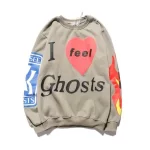Cooking Wine Market Overview
The global cooking wine market is a niche but steadily growing segment within the broader food and beverage industry. Cooking wine, an essential ingredient in various culinary traditions, enhances the flavor and aroma of dishes. It is widely used by both professional chefs and home cooks to add depth to sauces, marinades, and other recipes. The market’s growth is driven by increasing culinary experimentation and the rising popularity of gourmet cooking at home. As consumers seek to elevate their home-cooked meals, the demand for high-quality cooking wine continues to expand, contributing to market growth.
Cooking Wine Market Size
The global cooking wine market has seen a steady increase in size, reaching approximately USD 405.35 million in 2023. This growth is driven by the rising demand for premium ingredients in both professional kitchens and households. As culinary trends evolve and consumers become more adventurous in their cooking, the market for cooking wine is expected to continue expanding. Projections indicate that the market will grow at a compound annual growth rate (CAGR) of 3.9% from 2024 to 2032, reaching nearly USD 572.47 million by 2032. This upward trend highlights the growing importance of cooking wine in culinary practices.
Cooking Wine Market Share
The market share of cooking wine is distributed among various key players, with several leading companies dominating the industry. These companies offer a wide range of products, catering to different culinary needs and preferences. The market is segmented into various regions, with North America and Europe holding significant shares due to the high demand for gourmet cooking ingredients. Asia-Pacific is also emerging as a promising market, driven by increasing interest in Western cooking styles and the growing foodservice industry. As more consumers embrace cooking wine, the market share is expected to diversify further, with new entrants and product innovations.
Cooking Wine Market Trends
Several key trends are shaping the cooking wine market, reflecting evolving consumer preferences and industry innovations. One notable trend is the increasing demand for organic and natural cooking wines, as health-conscious consumers seek clean-label products. Additionally, the rise of international cuisines and fusion cooking has boosted the popularity of diverse cooking wines, including those from different grape varieties and regions. Sustainability is also becoming a significant trend, with companies focusing on eco-friendly packaging and production practices. Furthermore, the convenience trend is driving the growth of ready-to-use cooking wines, appealing to busy home cooks and professional chefs alike.
Cooking Wine Market Analysis
The global cooking wine market is experiencing steady growth, driven by several factors, including the increasing interest in gourmet cooking and the rising number of culinary shows and social media influencers promoting sophisticated cooking techniques. The market is characterized by a wide variety of cooking wines, ranging from red and white wine varieties to specialty products like sherry and Marsala. These products are used to enhance the flavor of a wide range of dishes, from meats and vegetables to sauces and desserts. The market’s growth is further supported by the expansion of the foodservice industry, which uses cooking wine in large quantities for meal preparation.
However, the market faces challenges such as regulatory restrictions on alcohol content in cooking wine, which varies by region. Additionally, the rising cost of wine production due to climate change and fluctuating grape yields could impact the market’s growth. Despite these challenges, the cooking wine market is expected to continue its upward trajectory, driven by ongoing innovation and the growing popularity of home cooking.
Cooking Wine Market Segmentation
The cooking wine market can be segmented based on several factors, each of which plays a crucial role in shaping the market dynamics:
- Type: The market is segmented into different types of cooking wines, including red wine, white wine, sherry, and Marsala. Each type serves specific culinary purposes, with red and white wines being the most commonly used in various recipes.
- Application: Cooking wines are used in a variety of applications, including sauces, marinades, soups, stews, and desserts. The versatility of cooking wine makes it a staple ingredient in both professional kitchens and households.
- End-User: The market can also be segmented by end-user, including households, restaurants, hotels, and catering services. The demand from the foodservice industry is particularly strong, driving significant sales.
- Distribution Channel: Cooking wines are distributed through various channels, including supermarkets, specialty stores, online platforms, and direct sales. The rise of e-commerce has made cooking wines more accessible to consumers, contributing to market growth.
Cooking Wine Market Growth
The cooking wine market is expected to experience steady growth over the forecast period, driven by increasing consumer interest in gourmet cooking and the expansion of the foodservice industry. The market is projected to grow at a CAGR of 3.9% from 2024 to 2032, reaching approximately USD 572.47 million by 2032. This growth is supported by the rising demand for high-quality ingredients, the influence of culinary shows and social media, and the growing popularity of international cuisines. Additionally, the convenience of ready-to-use cooking wines and the trend towards organic products are expected to further fuel market growth.
Recent Developments and Challenges in the Cooking Wine Market
The cooking wine market has seen several recent developments, reflecting the industry’s dynamic nature. One notable development is the introduction of organic and natural cooking wines, catering to the growing demand for clean-label products. Companies are also focusing on sustainable practices, including eco-friendly packaging and sourcing ingredients from sustainable vineyards. These initiatives align with consumer preferences for environmentally responsible products.
However, the market faces challenges that could impact its growth. Regulatory restrictions on alcohol content in cooking wines vary by region, creating compliance complexities for manufacturers. Additionally, the rising cost of wine production, driven by climate change and unpredictable grape yields, poses a challenge to maintaining competitive pricing. Despite these challenges, the cooking wine market remains resilient, with ongoing innovation and adaptation to consumer trends expected to drive continued growth.
Key Players in the Cooking Wine Market
Several key players dominate the global cooking wine market, offering a wide range of products to meet diverse consumer needs. Some of the leading companies include:
- AAK AB: AAK AB is a prominent player in the cooking wine market, known for its high-quality cooking oils and wines used in various culinary applications.
- ECOVINAL: ECOVINAL specializes in producing natural and organic cooking wines, catering to the growing demand for clean-label products.
- Gourmet Classic Limited: This company offers a variety of cooking wines, including red, white, and specialty wines, widely used in professional kitchens and households.
- Mizkan America, Inc.: Mizkan is a leading manufacturer of cooking wines, known for its diverse product range and commitment to quality.
- Marina Foods, Inc.: Marina Foods offers a selection of cooking wines, focusing on authentic flavors and traditional production methods.
- World Finer Foods, LLC: World Finer Foods distributes a range of international cooking wines, catering to the growing demand for global cuisines.
- Eden Foods, Inc.: Eden Foods is known for its organic and natural cooking wines, appealing to health-conscious consumers.
Thanks for allowing guest posting https://fantapa.com/



